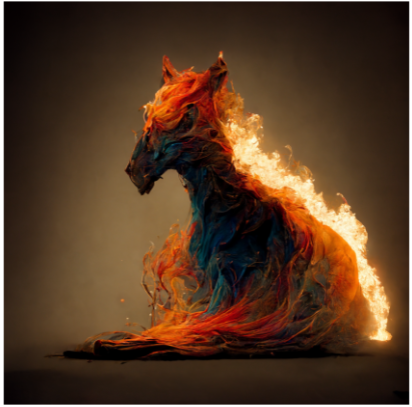Artificial Intelligence: Will it Replace Artists?

November 29, 2022
Ever since its inception, AI art technology has been subject to controversy, and rightfully so. Recently, arguments around the use of AI artwork have been brought back into the public eye.
Recent public interest in AI art stems from an incident earlier this year when an artist (I use the term “artist” liberally here) used an AI-generated submission to win the Colorado State Fair’s annual art competition.
The artist used Midjourney, an AI that generates realistic images based on a text prompt. As I later discovered, Midjourney is one of many different AI art applications available to use. Some other ones include DALL-E 2 and Stable Diffusion.
When I first heard about this, I was both skeptical and worried. If art can be made by typing anything that comes to mind, what does that mean for artists? Should this technology be allowed in competitions? After all, it requires no work on the part of the user aside from just typing the right words.
With all these thoughts racing through my head, I visited Midjourney and gingerly wrote the first thing that came to mind (a horse made of fire) and waited. The result came shortly after, shown in the image on the right. I was at once both let down and impressed. As you can see, Midjourney produces striking visual art, but with the caveat that anything it produces is made to mimic the artwork it was trained on. This leaves the end result looking generic, yet detailed. It’s like the cover art of a Young Adult novel at Barnes and Noble.
Art is meant to convey information. It’s meant to serve as a window into the artist’s mind. Midjourney does no such thing. That’s why AI-generated work should be treated as its own category, separate from human-made art.
But, then again, oil painters must have said the same thing about photography when it was first popularized…


